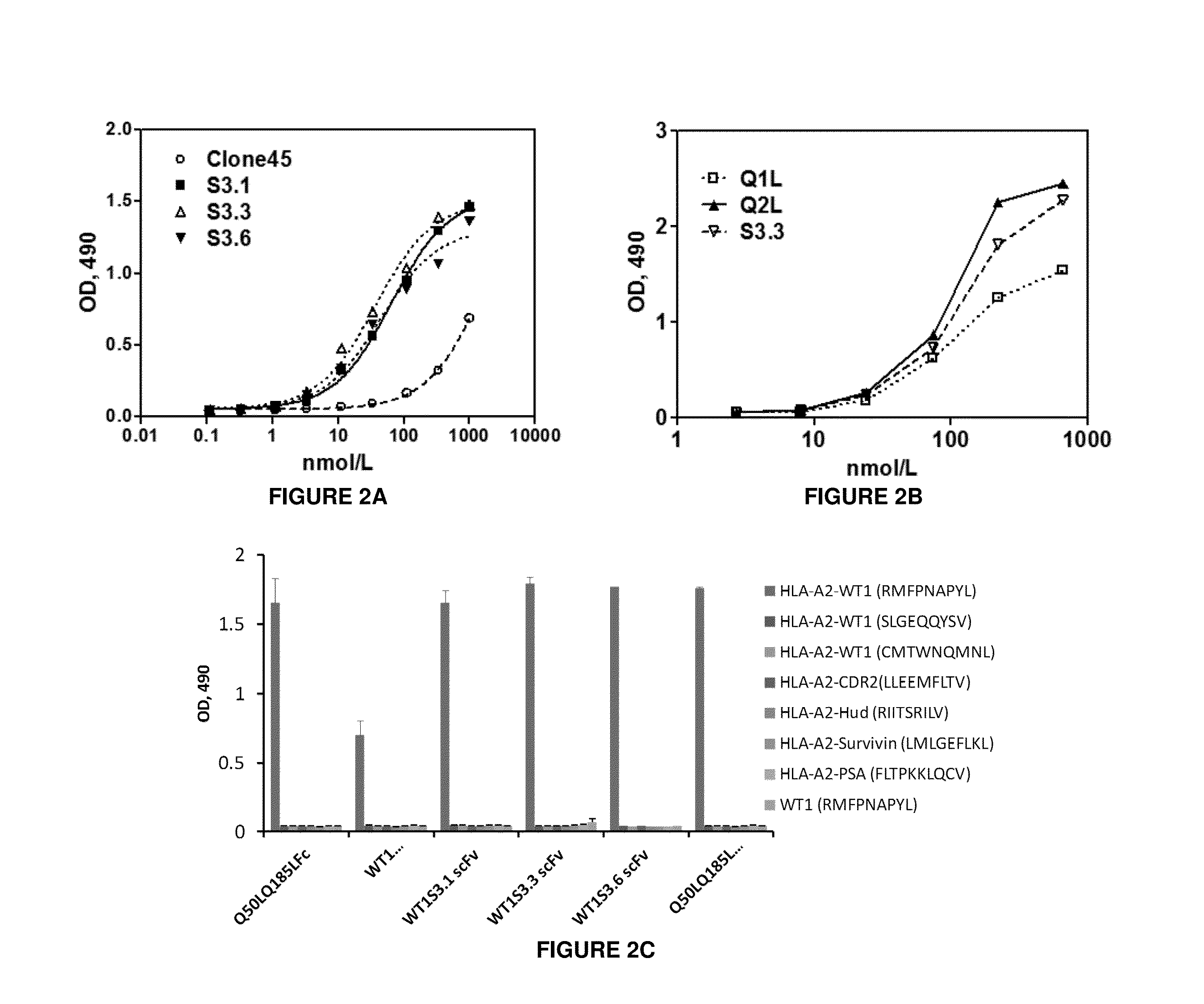Antigen-binding proteins specific for hla-a2-restricted wilms tumor 1 peptide
a tumor and peptide technology, applied in the field of antigen-binding proteins specific for hla-a2-restricted wilms tumor 1 peptide, can solve the problems of slow shrinkage of the repertoire of undiscovered cell surface antigens on solid tumors, limited therapeutic potential of low affinity reagents,
- Summary
- Abstract
- Description
- Claims
- Application Information
AI Technical Summary
Benefits of technology
Problems solved by technology
Method used
Image
Examples
example
Materials and Methods
[0146]Human PBMC were isolated from whole blood by ficoll Hypaque density gradient separation. T cells were then isolated from PBMC by negative magnetic separation using magnetic beads containing antibodies against CD19, CD20, CD14, CD56 (Pan T-cell isolation kit, Miltenyi Biotech). Tap-deficient HLA-A2T2 cells, NK-92-MI-MI and all tumor cell lines were purchased from ATCC. Cells were cultured in RPMI 1640 with 2 mM L-glutamine and 10% Fetal Bovine Serum (FBS). NK-92-MI-MI cells and genetically CAR modified NK-92-MI-MI cells were propagated in Alpha Minimum Essential medium with 2 mM L-glutamine, 12.5% horse serum to a final concentration of 12.5% Horse Serum and 12.5% FBS.
[0147]MHC-Peptide Complexes:
[0148]All peptides were purchased and synthesized by Genscript Synthesis Inc. Biotinylated soluble MHC class I-peptide complexes were generated by refolding the peptides with recombinant HLA-A2 and β2 microglobulin at the Tetramer facilit...
PUM
| Property | Measurement | Unit |
|---|---|---|
| Fraction | aaaaa | aaaaa |
Abstract
Description
Claims
Application Information
 Login to View More
Login to View More - R&D
- Intellectual Property
- Life Sciences
- Materials
- Tech Scout
- Unparalleled Data Quality
- Higher Quality Content
- 60% Fewer Hallucinations
Browse by: Latest US Patents, China's latest patents, Technical Efficacy Thesaurus, Application Domain, Technology Topic, Popular Technical Reports.
© 2025 PatSnap. All rights reserved.Legal|Privacy policy|Modern Slavery Act Transparency Statement|Sitemap|About US| Contact US: help@patsnap.com



